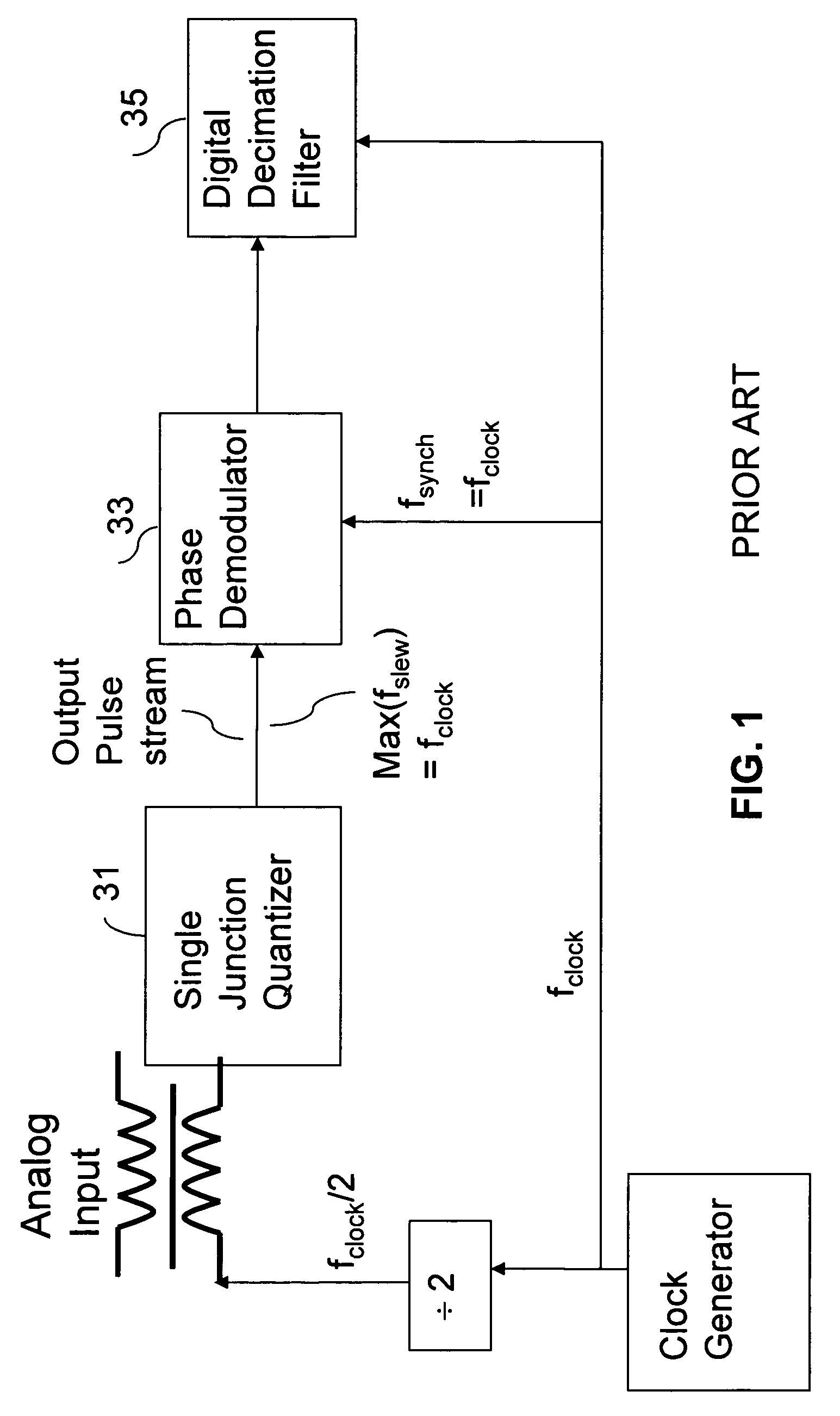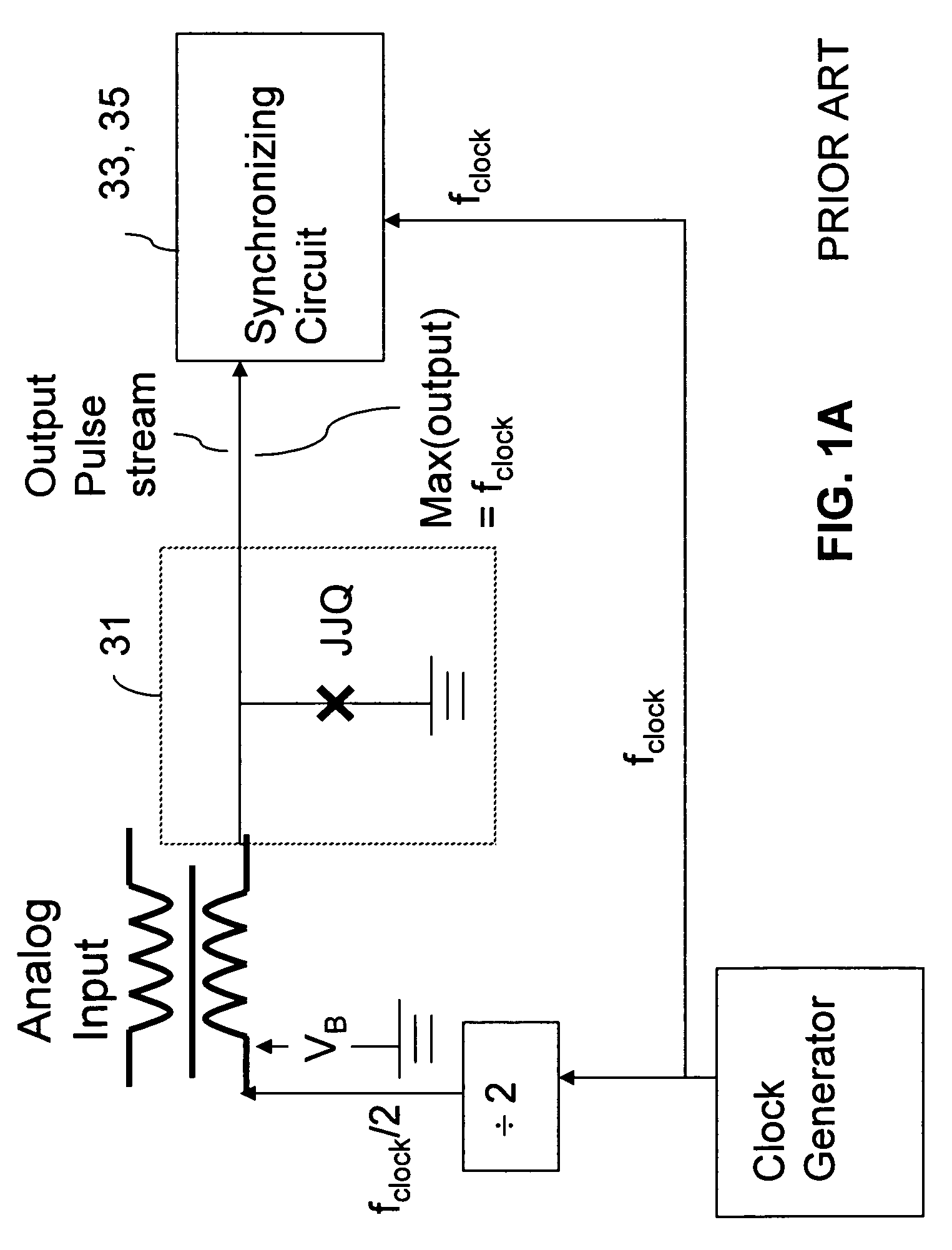Flux-quantizing superconducting analog to digital converter (ADC)
a superconducting analog to digital converter and flux-quantization technology, applied in the direction of code conversion, transmission system, instruments, etc., can solve the problems of significant constraints on the maximum speed of response and limitation of the dynamic range of input signals, and achieve the effect of increasing the dynamic range of quantizers
- Summary
- Abstract
- Description
- Claims
- Application Information
AI Technical Summary
Benefits of technology
Problems solved by technology
Method used
Image
Examples
Embodiment Construction
[0029]FIG. 2 is a block diagram of an ADC system embodying the invention. The system of FIG. 2 includes circuitry for performing the analog to digital conversion and circuitry for generating a bias (offset) voltage for the analog signal applied to the conversion circuit. The bias voltage generator includes an external clock circuit 50 coupled via an ac / SFQ converter circuit 60 to a flux pump 70 whose outputs are merged via an inductive network 74 to generate a bias voltage (VB) which is superimposed on the analog input signal to generate an analog input signal Vin which is applied to a quarter-rate (divide by four) quantizer 100. The quantizer 100 converts the amplitude of an analog voltage (Vin) into pulse streams which can be digitally processed via circuitry which can be synchronized to the basic clock circuit.
[0030]The bias generating circuitry shown in FIG. 2 may be implemented as shown in FIGS. 3, and 3A though 3D. In FIG. 3, the flux pump 70 is formed using four (4) phase gen...
PUM
 Login to View More
Login to View More Abstract
Description
Claims
Application Information
 Login to View More
Login to View More - R&D
- Intellectual Property
- Life Sciences
- Materials
- Tech Scout
- Unparalleled Data Quality
- Higher Quality Content
- 60% Fewer Hallucinations
Browse by: Latest US Patents, China's latest patents, Technical Efficacy Thesaurus, Application Domain, Technology Topic, Popular Technical Reports.
© 2025 PatSnap. All rights reserved.Legal|Privacy policy|Modern Slavery Act Transparency Statement|Sitemap|About US| Contact US: help@patsnap.com



